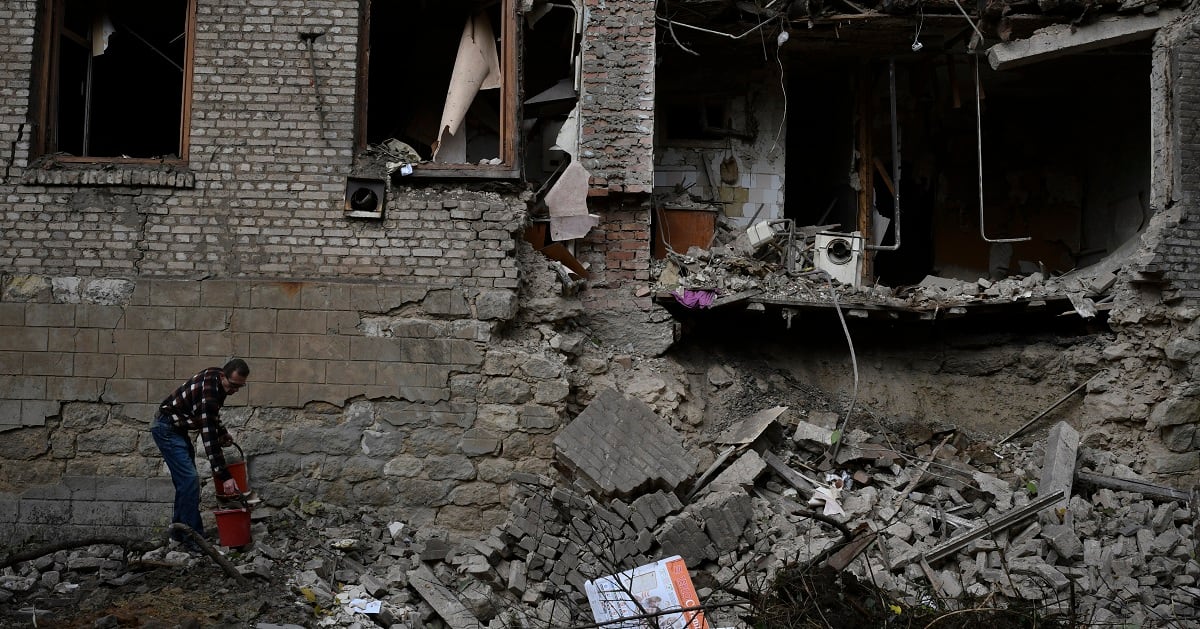The Biden administration will send Ukraine a new $725 million package of weapons and other military assistance, the White House said Friday, as the U.S. added to a flurry of aid announcements from European allies this week.
The announcement comes on the heels of meetings at NATO, where defense leaders from Europe and around the world pledged weapons and air defense systems to Ukraine as Russia heightened its bombardment of Kyiv and other regions.
Officials said there are no major new weapons in the U.S. package. Instead, the U.S. aid is largely aimed at restocking thousands of rounds of ammunition for the weapons systems Ukraine has been successfully using in its counteroffensive against Russia, as the war stretches into its eighth month.
The new package includes rounds for the High Mobility Artillery Rocket Systems, known as HIMARS, a critical weapon that has improved Ukraine’s ability to strike ammunition depots, bridges and other key targets that erode Russia’s ability to resupply troops. The U.S. has already sent 20 HIMARS to Ukraine, and has promised 18 more that would be delivered in the coming years.
The aid announcement caps a string of commitments from allies this week. One after another in the last two days, countries large and small detailed new contributions to Ukraine’s fight, underscoring the persistent fears among European nations that they could be Moscow’s next target.
“Russia’s latest assaults have only deepened the determination of the Ukrainian people and further united countries of goodwill from every region on Earth,” said U.S. Defense Secretary Lloyd Austin at a meeting of defense leaders this week. “Our resolve and steadiness of purpose has only been strengthened.”
A senior defense official told reporters at the Pentagon that Ukraine’s immediate needs continue to be additional air defenses. The official said that, for example, Russia fired more than 80 missiles at Ukrainian targets during one recent 24-hour period, and Ukrainian air defenses were able to intercept about half of them.
The official, who spoke on condition of anonymity to discuss the U.S. assessment of the war, said that the intercepts use a lot ammunition because its likely Ukrainians fired more than one round at each incoming missile.

The British government said last week it would provide missiles for advanced NASAM anti-aircraft systems that the Pentagon plans to send to Ukraine. Britain also is sending hundreds of drones and 18 howitzer artillery guns. Germany has sent the first of four promised IRIS-T air defense systems, France pledged more artillery, anti-aircraft systems and missiles, the Netherlands said it would send missiles, and Canada is planning to send winter equipment, drone cameras and satellite communications.
Russia has intensified its attacks, hitting the Kyiv region with kamikaze drones and firing missiles elsewhere at civilian targets, including a hospital, a kindergarten and other buildings in the town of Nikopol, across the river from the Russian-occupied Zaporizhzhia Nuclear Power Plant.
The strikes have been described as Russian payback for the bombing of a strategic bridge linking Russia with annexed Crimea. Kremlin war hawks have urged Putin to escalate the bombing campaign even more to punish Ukraine for Saturday’s truck bomb attack on the landmark Kerch Bridge. Ukraine has not claimed responsibility for the attack.
The surge in Russian attacks also represents an urgent effort by Moscow to regain its footing as Ukraine’s fierce counteroffensive has taken back towns and territory that Russia had overrun in the earlier days of the war.
Since the war began on Feb. 24, the U.S. has committed more than than $17.5 billion in weapons and other equipment.





